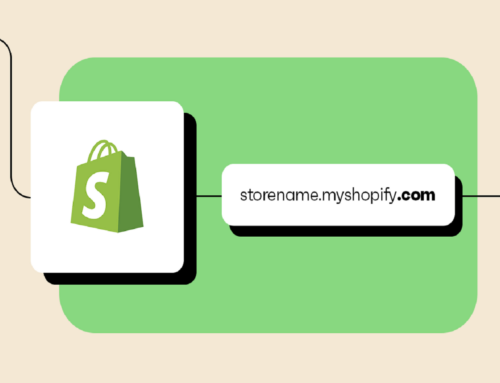Shopify draft order can be a game-changer for managing custom orders, manual payments, and special requests without disrupting your sales flow. It provides a seamless way to handle cases like setting up an order over the phone, reserving products for a loyal customer, or offering unique discounts.
In this guide, we will break down what is a draft order on Shopify, and how to create and manage it efficiently. Utilmately, your store runs smoothly while accommodating diverse customer needs. Check it out now!
Contents
What Is A Draft Order In Shopify?
-

A Shopify draft order is a manually created order for handling custom products, discounts, and special sales. (Source: Cleverific)
A Shopify draft order allows you to manually put together a sale outside of the regular checkout process. It’s like a rough draft of an order that you create rather than the customer. Draft orders are handy when you need to customize something – maybe a special product, a unique discount, or transactions not done online.
With draft orders, you can build the order yourself by adding items, coupons or discounts, shipping details, and payment instructions. Then you send it over to the customer toreview and pay for.
Step-by-Step Guide to Creating a Shopify Draft Order
Below are the quick steps of how to create a draft order in Shopify for you to follow.
Step 1: Accessing the Draft Order Section
First, head over to your Shopify admin homepage. That’s the backend dashboard that controls all your store’s settings. Once there, find the “Draft Orders” section. This tool lets you manually build orders separately from someone going through your regular online checkout process.
Step 2: Creating a Draft Order
Within the Draft Orders section, you can readily begin assembling the customized purchase. Products are easily included through a search function, permitting adjustment of factors such as varying quantities or differentiating attributes like size or color as well.
Prices require no limitation either, allowing for direct modification, percentage-based discounts to be applied, or taxes to be alternatively configured. This versatility imbues full control over the order’s financial framework.
Moreover, tags or descriptive notes can be appended to each draft for organizational purposes. Order remnants are retained through the store’s order archive, facilitating straightforward reference as needed. The flexibility of Draft Orders aptly facilitates scenarios beyond standard e-commerce protocols.
Step 3: Adding Customers to a Draft Order
Shopify allows you to link each draft order to a specific customer profile, which can be an existing profile or a new one created on the spot. Associating customer accounts with draft orders provides benefits like loyalty tracking and streamlined communication.
For example, you can monitor repeat customers and offer personalized discounts, building a stronger relationship with your clientele. It’s also helpful to have customer information readily available if you need to follow up or offer additional support.
Step 4: Customizing Shipping and Payment Methods
One of the key benefits of draft orders is the flexibility they provide to customize shipping and payment configurations. You have the ability to manually select shipping rates tailored to each order’s unique requirements or offer bespoke shipping methods, including free shipping if part of a promotional campaign.
When determining preferred payment methods, Shopify allows merchants to choose from various options, such as manual payment processing for cash-on-delivery orders, online payment integrations, or even partial payments if a deposit is necessary upfront.
Read More:
Best Practices for Efficient Draft Order Management
Now you have known “What is a draft order in Shopify?”, let’s learn how to manage it effectively? Here are some best practices to keep your draft orders organized, automated, and customer-focused for seamless order processing.
1. Organizing Draft Orders
To keep a Shopify draft order well-organized, use custom tags like “VIP,” “wholesale,” or “custom request” to categorize each order. These tags make it easier to sort and locate specific orders quickly. Adding detailed notes for each order – such as special instructions, delivery preferences, or unique product details – can also help streamline processing.
Additionally, filter draft orders by tags or status to easily track and manage them without losing sight of critical details.
2. Prioritizing Timely Follow-Ups
Don’t forget to prompt follow-ups on draft orders can improve customer satisfaction and reduce the risk of incomplete sales. Set reminders for unpaid draft orders to remind customers of pending payments or unfinished orders. Automated email reminders can also help by sending friendly notifications about pending payments, encouraging customers to complete their orders while the details are fresh.
3. Automating Repetitive Tasks

- Ensuring prompt follow-ups on draft orders can improve customer satisfaction. (Source: Freepik)
Why waste time doing the same tasks over and over? Shopify offers tools and third-party apps that can streamline these repetitive processes. Picture this: invoices sent automatically, discounts applied with a click, and a CRM that pulls everything together in one place. By embracing automation, you free up time for what matters most – growing your business.
4. Optimizing for B2B and Wholesale Orders
For wholesale or recurring business customers, Shopify draft orders can be especially useful. Create draft orders specifically for these clients to maintain consistency and save time.
Personalize bulk discounts and apply them directly to these orders to meet the unique pricing needs of wholesale buyers. Keeping a clear record of communication and order history helps build stronger relationships and simplifies future orders for each B2B customer.
5. Tracking and Analyzing Performance
Our expert advice is that you can track the performance of your draft orders to understand their impact on sales. Regularly monitor how many draft orders convert into completed sales, and analyze any patterns or trends.
This information can reveal which products or customer types generate the most custom requests, allowing you to refine your approach. These insights can improve the overall customer experience and help shape your strategy for handling special orders.
FAQs
- What is a Shopify draft order used for?
A Shopify draft order is used to manually create orders for custom transactions, such as special discounts, bulk orders, or custom products, that don’t go through the standard checkout process.
- Can customers pay for draft orders online?
Yes, customers can pay for draft orders online if you email them an invoice that includes a checkout link.
- How do I apply discounts in draft orders?
When creating a draft order, you can manually adjust prices or add discount codes directly within the order.
- Does a draft order become a regular order after payment?
Yes, once the customer completes payment, the draft order converts into a regular order in your Shopify store.
- How can I track and manage multiple draft orders?
Use tags, filters, and notes to organize and track draft orders by status or customer type, making it easier to manage multiple orders efficiently.
Conclusion
Effectively managing draft orders in Shopify can streamline your sales process, enhance customer satisfaction, and enable greater flexibility for unique order situations. By following best practices like organizing orders with tags, automating repetitive tasks, and monitoring order performance, you can make draft orders a powerful tool in your Shopify toolkit.
Stay updated with the latest eCommerce tips, design trends, and growth strategies—follow BSS for expert insights that help elevate your online store’s performance!







